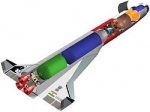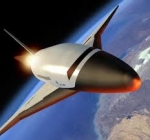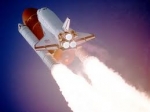Displaying items by tag: space plane
Intermediate eXperimental Vehicle (IXV)
The Intermediate eXperimental Vehicle (IXV) is a European Space Agency (ESA) experimental re-entry vehicle intended to validate European reusable launchers which could be evaluated in the frame of the FLPP program.
The IXV development would be carried out under the leadership of the NGL Prime SpA company. It would inherit of the principles of previous studies such as CNES' Pre-X and ESA's AREV (Atmospheric Reentry Experimental Vehicle).
Rocketplane Global, Inc.
Rocketplane Global, Inc. (RGI) is an USA company dedicated to commercial space flight.
Rocketplane is designing the XP suborbital vehicle.
Rocketplane was founded in 2001.
Bristol Spaceplanes Ltd
Bristol Spaceplanes is a British company dedicated to spaceplane design.
It was founded in 1991 to realise low-cost access to space. Its clients include ESA, and its work has been used to further NASA studies on reusable launch vehicles and space tourism. Bristol Spaceplanes' designs have been the subject of feasibility studies from ESA and the UK Department of Trade and Industry.
Skylon (spaceplane)
Skylon is a design for a spaceplane by the British company Reaction Engines Limited (REL).
It uses SABRE, a combined-cycle, air-breathing rocket engine, to reach orbit in a single stage. A fleet of vehicles is envisaged; the design is aiming for re-usability for more than 200 times.
As of 2012, only a small portion of the funding required to develop and build Skylon had been secured. The research and development work on the SABRE engine design is proceeding under a small European Space Agency (ESA) grant.
Avatar (spaceplane)
AVATAR (from "Aerobic Vehicle for Hypersonic Aerospace TrAnspoRtation") was a concept development effort for a single-stage reusable spaceplane capable of horizontal takeoff and landing, by India's Defense Research and Development Organization along with Indian Space Research Organization and other research institutions.
The mission concept was for cheaper military and civilian satellite space launches. The idea was to develop a hyperplane vehicle that can take off from conventional airfields, collect air in the atmosphere on the way up, liquefy it, separate oxygen and store it on board for subsequent flight beyond the atmosphere. The AVATAR RLV was first announced in May 1998 at the Aero India 98 exhibition held at Bangalore. It was planned to be the size of a MiG-25 fighter and would be capable of delivering a 500 kg to 1,000 kg payload to low earth orbit at very low cost for an estimated vehicle life of 100 launches.
X-37 robot spaceplane
The Boeing X-37 (also known as the X-37 Orbital Test Vehicle) is an American reusable unmanned spacecraft.
It is seen either as a minishuttle or as a robot spaceplane.
It is boosted into space by a rocket, then re-enters Earth's atmosphere and lands as a spaceplane. The X-37 is operated by the United States Air Force for orbital spaceflight missions intended to demonstrate reusable space technologies. It is a 120%-scaled derivative of the earlier Boeing X-40.
The X-37 began as a NASA project in 1999, before being transferred to the U.S. Department of Defense in 2004. It conducted its first flight as a drop test on 7 April 2006, at Edwards Air Force Base, California. The spaceplane's first orbital mission, USA-212, was launched on 22 April 2010 using an Atlas V rocket. Its successful return to Earth on 3 December 2010 was the first test of the vehicle's heat shield and hypersonic aerodynamic handling. A second X-37 was launched on 5 March 2011, with the mission designation USA-226; it returned to Earth on 16 June 2012. A third X-37 mission launched successfully on 11 December 2012.
FAST20 XX
FAST 20XX (Future high-Altitude high-Speed Transport 20XX) is a European Space Agency (ESA) program to develop the necessary technologies for a hypersonic suborbital spaceplane. Funding for the program was established under the European Commission's Seventh Framework Programme.
The FAST 20XX program is intended to provide a technological foundation for the industrial introduction of advanced hypersonic suborbital spaceplanes in the medium to longer term. No detailed vehicle design is planned under the program in its current form, with work instead focusing on mastering the technologies required for the development of such designs. Once the needed technologies are identified, researchers plan to develop the dedicated analytical, numerical and experimental tools needed to investigate them. The project will also look at the legal and regulatory issues related to suborbital flight in consultation with government and international authorities.
Two concepts will be focused on under the program:
- the ALPHA, is based on SpaceShipOne, which won the Ansari X-Prize in 2003. A key aspect of the design is the need for a carrier plane to launch the suborbital vessel.
- The SpaceLiner is a concept of the DLR (German Aerospace Center). The SpaceLiner is an all–rocket-propelled vehicle intended to achieve a step change in ultra-fast long-haul passenger and freight transport, with the intended ability to transport 50 passengers from Australia to Europe in 90 minutes.
SpaceLiner
The SpaceLiner is a hypersonic suborbital spaceplane concept initiated by the German Aerospace Center (DLR) in 2005 and supported by the EU under the European Space Agency's (ESA) FAST 20XX program since December 2009.
The SpaceLiner is designed to be a reusable vehicle consisting of two stages: the booster and the space-plane itself. Both stages are propelled by LOx/LH2 rocket engines. The SpaceLiner lift-off is vertical (much like the Space Shuttle), powered by the combined thrust of the booster and the space-plane rocket engines. After the booster separation and engine cut-off, the space-plane behaves like a glider, skipping along the high layers of the atmosphere and ostensibly allowing for ultra-fast point-to-point travel. The SpaceLiner is designed to transport 50 passengers from Australia to Europe in 90 minutes or 100 passengers from Europe to California in 60 minutes.
Space Shuttle
The Space Shuttle was a partially reusable launch system and orbital spacecraft operated by the NASA for human spaceflight missions.
The system combined rocket launch, orbital spacecraft, and re-entry spaceplane with modular add-ons. The first of four orbital test flights occurred in 1981 leading to operational flights beginning in 1982. It was used on a total of 135 missions from 1981 to 2011 all launched from the Kennedy Space Center, Florida.
The Space Shuttle at launch consisted of the Orbiter Vehicle (OV), one external tank (ET), and two Solid Rocket Boosters (SRBs). The orbiter decelerated in the atmosphere before flying like a glider but with reaction control system thrusters before landing on a long runway.
The final Space Shuttle mission was in July 2011 to deliver parts to the International Space Station (ISS).
SpaceShipOne
SpaceShipOne is a suborbital air-launched spaceplane that completed the first manned private spaceflight in 2004. That same year, it won the US$10 million Ansari X Prize and was immediately retired from active service. Its mothership was named "White Knight". Both craft were developed and flown by Mojave Aerospace Ventures, which was a joint venture between Paul Allen and Scaled Composites, Burt Rutan's aviation company.










